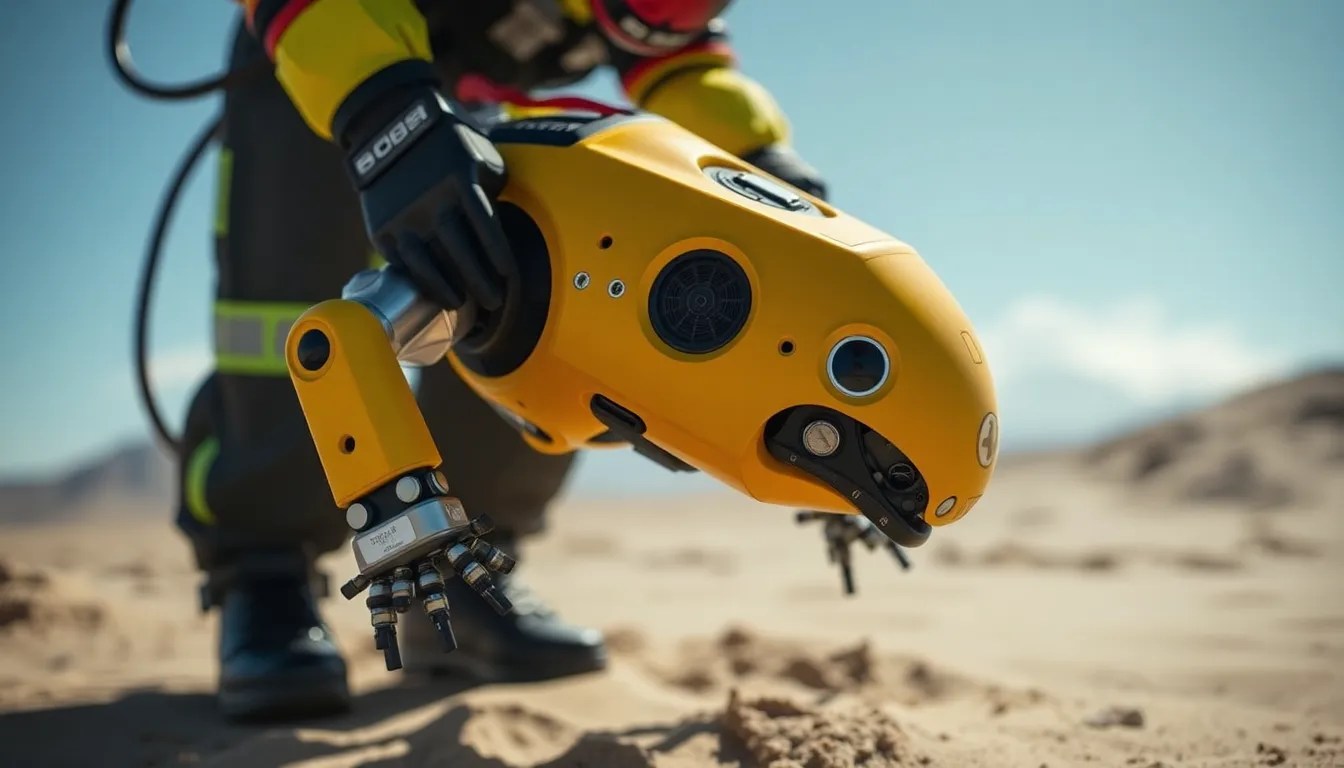How Soft Robotics is Changing the Face of Search and Rescue Operations
I. Introduction
Search and rescue operations are critical endeavors that save lives in times of disaster. These operations can range from rescuing individuals trapped in collapsed buildings after earthquakes to locating missing persons in wilderness areas. The success of such missions heavily relies on the effectiveness and adaptability of the technologies used.
As the nature of disasters evolves, so too must the methods of response. Innovation in emergency response is vital to improving outcomes and increasing efficiency. One of the most promising advancements in this field is the emergence of soft robotics, which offers unique capabilities that traditional robotic systems cannot match.
This article will explore how soft robotics is revolutionizing search and rescue operations, enhancing accessibility, minimizing risks to human rescuers, and providing versatile solutions for navigating complex environments.
II. Understanding Soft Robotics
Soft robotics is a subfield of robotics that focuses on creating robots from highly flexible materials, allowing them to safely interact with humans and their surroundings. Unlike traditional robots, which are typically rigid and mechanical, soft robots can deform, adapt, and manipulate their shape based on the environment.
Key characteristics of soft robotics include:
- Flexibility: Soft robots can navigate through tight spaces and uneven terrains.
- Safety: Their soft materials reduce the risk of injury when interacting with humans.
- Adaptability: They can conform to various shapes and sizes, making them suitable for different tasks.
Soft robotics differs from traditional robotics in several ways. Traditional robots rely on hard materials and fixed joint structures, limiting their ability to maneuver in complex environments. In contrast, soft robots utilize materials such as silicone, hydrogels, and fabric, enabling them to perform delicate tasks and navigate through hazardous areas with ease.
Key materials and technologies used in soft robotics include:
- Soft actuators: These are devices that allow soft robots to move and change shape.
- Sensors: Integrated sensors help soft robots perceive their environment and make decisions.
- Inflatable structures: These enable robots to expand and contract, providing versatility in movement.
III. The Role of Soft Robotics in Search and Rescue
Soft robotics plays a crucial role in enhancing search and rescue operations in several ways:
- Enhancing accessibility in disaster zones: Soft robots can easily navigate through rubble, narrow spaces, and uneven terrains that would be challenging for traditional rescue equipment.
- Minimizing risk to human rescuers: By deploying soft robots in hazardous environments, human rescuers can be kept out of harm’s way, reducing the risk of injury during operations.
- Versatility in navigating complex environments: The adaptable nature of soft robots allows them to perform a variety of tasks, from lifting debris to providing medical supplies.
IV. Case Studies of Soft Robotics in Action
Several recent disasters have showcased the effectiveness of soft robotics in search and rescue operations:
- Earthquake in Haiti: Soft robotic systems were deployed to sift through rubble and locate survivors, demonstrating their ability to navigate treacherous conditions.
- Flooding in Southeast Asia: Inflatable soft robots were used to deliver food and medical supplies to isolated communities, highlighting their adaptability in extreme weather conditions.
Specific soft robotic systems that have been instrumental in these operations include:
- Soft grippers: These devices can gently lift and manipulate objects without causing damage, essential in delicate rescue scenarios.
- Inflatable robots: Capable of expanding and contracting, these robots can reach areas that rigid robots cannot.
The lessons learned from these operations emphasize the importance of flexibility, safety, and adaptability in rescue robotics, leading to improved designs and functionalities.
V. Technological Innovations Driving Soft Robotics
The advancement of soft robotics is fueled by several technological innovations:
- Advances in materials science: The development of new soft actuators and sensors has greatly enhanced the capabilities of soft robots.
- Integration of AI and machine learning: AI algorithms enable soft robots to make real-time decisions based on sensory input, improving their navigation and interaction.
- Future trends: Emerging technologies such as self-healing materials and bio-inspired designs are expected to push the boundaries of soft robotics further.
VI. Challenges and Limitations of Soft Robotics
Despite their potential, soft robotics faces several challenges:
- Technical challenges: Designing soft robots that are both durable and functional in diverse environments remains a significant hurdle.
- Operational limitations: Extreme conditions, such as extreme temperatures or moisture, can affect the performance of soft robots.
- Ethical considerations: The deployment of soft robots in sensitive rescue scenarios raises questions about human oversight and decision-making.
VII. Future Prospects for Soft Robotics in Search and Rescue
Looking ahead, the future of soft robotics in search and rescue operations is promising:
- Predictions for the next decade: We can expect significant advancements in soft robotics, with more sophisticated designs and increased integration into emergency response protocols.
- Potential collaborations: Partnerships between academia, industry, and emergency services will be crucial for developing effective soft robotic systems.
- Global impact: The incorporation of soft robotics into emergency response strategies could improve the efficiency and effectiveness of global rescue operations.
VIII. Conclusion
Soft robotics has the transformative potential to change the landscape of search and rescue operations significantly. By enhancing accessibility, minimizing risks to human rescuers, and providing versatile solutions for complex environments, soft robots can greatly improve emergency responses in times of crisis.
As we look to the future, it is essential to continue investing in research and development in soft robotics. Such efforts will not only enhance the technology itself but also expand its applications in various fields, ultimately leading to more effective search and rescue operations worldwide.
In conclusion, embracing soft robotics in emergency response can pave the way for a safer, more efficient, and responsive future in search and rescue operations.



